The Top Dive Sites In The Caribbean
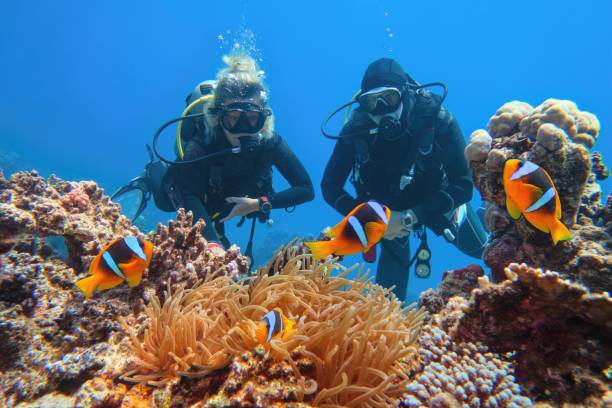
The Caribbean is a region in the western Atlantic Ocean, located southeast of North America, east of Central America and north of South America. It is composed of over 7,000 islands, islets, reefs, and cays, as well as coastal areas of mainland countries.
The Caribbean region is known for its warm climate, beautiful beaches, and diverse cultures. It is also known for its history of colonialism and the legacy of slavery, which has had a profound impact on the region's culture and identity.
The Caribbean is home to several languages, including English, Spanish, French, Dutch, and Creole. The region's cuisine is also diverse, with influences from Africa, Europe, and indigenous cultures.
Tourism is a major industry in the Caribbean, with millions of visitors coming to the region each year to enjoy its natural beauty, culture, and history.
The Caribbean is also home to several important industries, including agriculture, mining, and oil and gas production.
The Caribbean has faced many challenges, including natural disasters, economic inequality, and political instability. Despite these challenges, the region remains a vibrant and culturally rich part of the world.
Top dive sites in the Caribbean
The Caribbean is home to some of the world's best diving locations, offering a diverse range of marine life and underwater landscapes. Here are some of the top dive sites in the Caribbean:
1. Bloody Bay Wall, Cayman Islands

Bloody Bay Wall is a popular dive site located off the coast of Little Cayman, one of the Cayman Islands in the Caribbean.
It is considered one of the best wall dives in the world, and offers divers the opportunity to explore a dramatic underwater cliff that drops down to depths of over 1,000 feet.
The wall is covered in vibrant coral formations, sponges, and sea fans, and is home to a wide variety of marine life, including large schools of fish, reef sharks, turtles, and rays.
Divers can also explore several swim-throughs and caverns along the wall, which are home to smaller marine life like lobsters and moray eels.
Bloody Bay Wall is suitable for divers of all levels, although some sections of the wall may be deeper and more challenging for beginners.
The best time to dive at Bloody Bay Wall is between November and April, when the water is calm and visibility is at its best.
In addition to diving, visitors to Little Cayman can also enjoy other outdoor activities like hiking, birdwatching, and fishing, as well as relaxing on the island's beautiful beaches.
2. Blue Hole, Belize
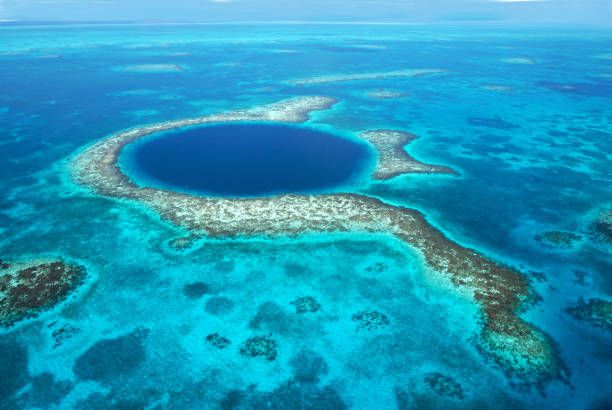
The Blue Hole is a world-famous dive site located off the coast of Belize in the Caribbean Sea. It is a large underwater sinkhole that is over 400 feet deep and has a diameter of around 1,000 feet.
It was formed during the last ice age, when sea levels were lower and the area was a dry cave system. As the sea level rose, the cave flooded and the roof collapsed, creating the circular formation that we see today.
The Blue Hole is famous for its clear blue water, and for the variety of marine life that can be seen at different depths.
The first 100 feet of the dive is characterized by crystal-clear waters and the presence of brightly-colored tropical fish, as well as beautiful coral formations.
At around 130 feet, divers reach the "halocline," a layer of water with a different salinity that creates a blurry, almost psychedelic visual effect.
At greater depths, divers can spot larger marine life, including reef sharks, barracudas, and even hammerhead sharks.
Diving at the Blue Hole is considered an advanced dive due to the depth and strong currents, and is typically recommended for experienced divers who have completed several deep dives.
However, there are also options for less experienced divers to dive at shallower depths around the perimeter of the Blue Hole.
The Blue Hole is part of the larger Belize Barrier Reef Reserve System, which is a UNESCO World Heritage Site and one of the most diverse ecosystems in the world.
In addition to diving, visitors to Belize can also enjoy other outdoor activities like kayaking, hiking, and exploring ancient Mayan ruins.
3. Turks and Caicos Barrier Reef
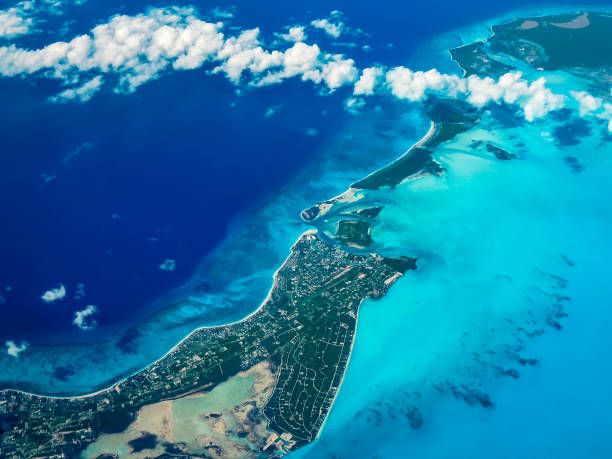
The Turks and Caicos Barrier Reef is one of the largest coral reef systems in the world, located in the Atlantic Ocean off the coast of the Turks and Caicos Islands in the Caribbean.
This extensive reef system stretches for over 200 miles, and is home to a diverse range of marine life, including over 1,000 species of fish, sea turtles, sharks, and dolphins.
Diving at the Turks and Caicos Barrier Reef offers divers the opportunity to explore vibrant coral formations, underwater canyons, and walls that drop down to depths of over 7,000 feet.
Some of the most popular dive sites in the area include West Caicos, Grace Bay, and Northwest Point, all of which offer diverse marine life and stunning underwater scenery.
In addition to diving, visitors to the Turks and Caicos Islands can enjoy a wide range of other outdoor activities, including snorkeling, kayaking, and fishing.
The islands are also home to many beautiful beaches and luxury resorts, making them a popular destination for tourists from around the world.
It's worth noting that the Turks and Caicos Barrier Reef is a protected area, and visitors are encouraged to practice responsible tourism and follow local guidelines to ensure the preservation of this important ecosystem.
4. Bonaire Marine Park, Bonaire
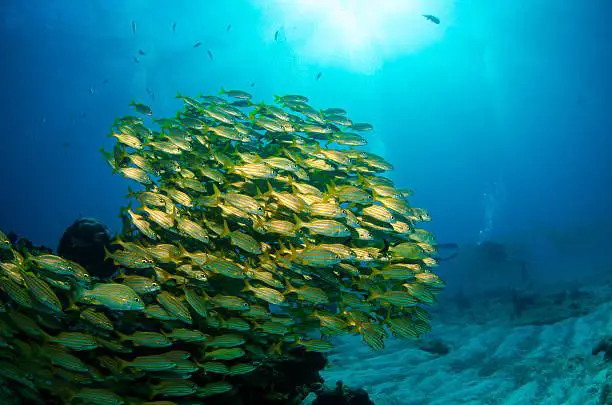
Bonaire Marine Park is a protected marine reserve located off the coast of the Caribbean island of Bonaire.
It is a popular destination for divers and snorkelers, who come to explore the diverse underwater ecosystem that is home to over 470 species of fish and over 120 species of coral.
The Marine Park covers an area of around 6,700 acres and includes reefs, walls, and shipwrecks that can be explored by divers of all levels.
The clear and calm waters of Bonaire make it an ideal location for underwater photography and marine life observation.
Some of the most popular dive sites in Bonaire Marine Park include the Salt Pier, a site that is home to schools of colorful fish and macro life like seahorses and frogfish, as well as the Hilma Hooker wreck, a former cargo ship that was sunk off the coast of Bonaire in 1984 and is now home to a variety of marine life.
In addition to diving and snorkeling, visitors to Bonaire can also enjoy other outdoor activities like hiking, windsurfing, and kiteboarding.
The island is known for its laid-back atmosphere and pristine natural environment, and is a popular destination for eco-tourism and sustainable travel.
It's worth noting that the Marine Park is a protected area, and visitors are encouraged to practice responsible tourism and follow local guidelines to ensure the preservation of this important ecosystem.
5. St. Croix Wall, U.S. Virgin Islands
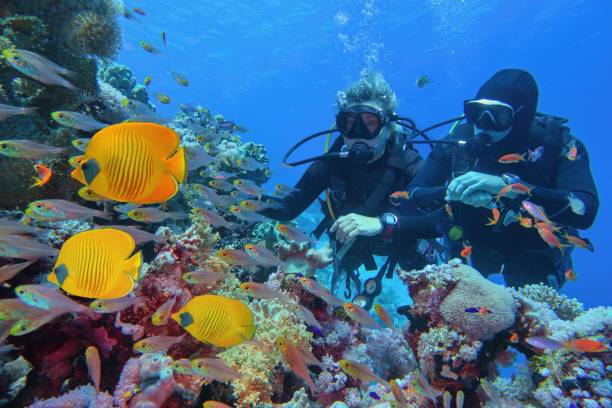
St. Croix Wall is a popular dive site located off the coast of St. Croix, one of the U.S. Virgin Islands in the Caribbean. It is a dramatic underwater wall that drops down to depths of over 13,000 feet, and is covered in colorful coral formations, sponges, and sea fans.
The wall is home to a diverse range of marine life, including large schools of fish, sea turtles, eagle rays, and sometimes even whale sharks.
Divers can also explore several swim-throughs and crevices along the wall, which are home to smaller marine life like lobsters and moray eels.
St. Croix Wall is suitable for divers of all levels, although some sections of the wall may be deeper and more challenging for beginners.
The best time to dive at St. Croix Wall is between November and April, when the water is calm and visibility is at its best.
In addition to diving, visitors to St. Croix can also enjoy other outdoor activities like hiking, horseback riding, and exploring historic sites like the Buck Island Reef National Monument.
The island is known for its laid-back Caribbean vibe and pristine natural environment, and is a popular destination for eco-tourism and sustainable travel.
6. Exumas, Bahamas
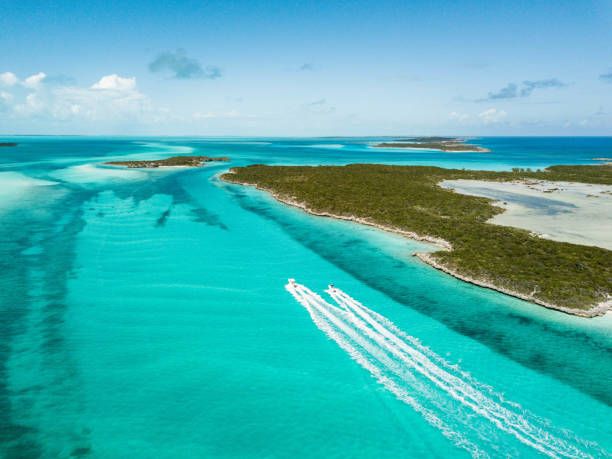
The Exumas are a chain of over 365 islands and cays located in the Bahamas, known for their crystal-clear waters, pristine beaches, and abundant marine life.
The Exumas are home to some of the best dive sites in the Caribbean, with a variety of underwater ecosystems to explore, including reefs, walls, and blue holes.
One of the most popular dive sites in the Exumas is the Washing Machine, a site located off the coast of Stocking Island where strong currents create a "washing machine" effect that divers can ride through.
This site is known for its abundance of marine life, including reef sharks, barracudas, and colorful fish.
Another popular dive site is the Exuma Land and Sea Park, a protected marine reserve that covers over 22 miles of ocean and includes a variety of dive sites like the Sea Aquarium, where divers can swim through underwater tunnels and caves, and the Blue Hole, a deep underwater sinkhole that is home to a variety of marine life.
In addition to diving, visitors to the Exumas can enjoy a range of other outdoor activities, including snorkeling, kayaking, and fishing.
The islands are also home to many luxurious resorts and private islands, making them a popular destination for tourists from around the world.
It's worth noting that many of the dive sites in the Exumas are located in protected marine areas, and visitors are encouraged to practice responsible tourism and follow local guidelines to ensure the preservation of this important ecosystem.
7. Stingray City, Grand Cayman
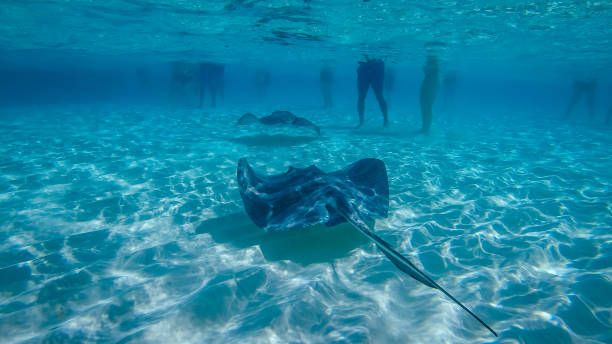
Stingray City is a popular tourist attraction located off the coast of Grand Cayman, the largest of the Cayman Islands in the Caribbean.
It is a shallow sandbar where visitors can interact with and feed southern stingrays in their natural habitat.
The stingrays in Stingray City have become accustomed to human interaction over time and are considered to be friendly and docile.
Visitors can snorkel or scuba dive with the stingrays, who often swim up to them looking for food.
In addition to Stingray City, Grand Cayman is also known for its excellent diving opportunities, with over 200 dive sites to explore.
Some of the most popular dive sites include the Kittiwake shipwreck, a former submarine rescue vessel that was sunk off the coast of Grand Cayman in 2011 to create an artificial reef, and the Bloody Bay Wall, a dramatic underwater wall that drops to depths of over 6,000 feet and is home to a variety of marine life like sea turtles, eels, and reef sharks.
Aside from diving and interacting with stingrays, visitors to Grand Cayman can also enjoy a range of other outdoor activities, including snorkeling, kayaking, and paddleboarding.
The island is also known for its luxury resorts and high-end shopping, making it a popular destination for tourists from around the world.
It's worth noting that while Stingray City is a popular attraction, visitors are encouraged to practice responsible tourism and follow local guidelines to ensure the well-being of the stingrays and the preservation of this important ecosystem.
8. La Caleta Underwater National Park, Dominican Republic
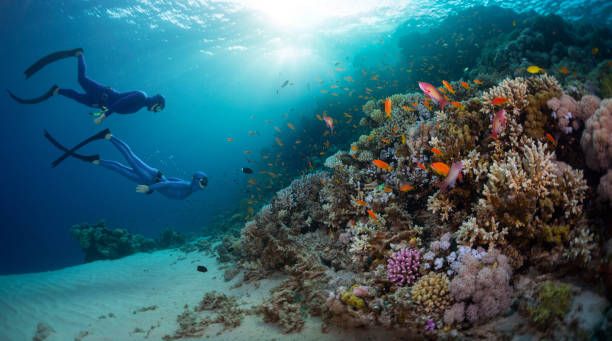
La Caleta Underwater National Park is a protected marine reserve located off the coast of the Dominican Republic, near the city of Santo Domingo.
It covers an area of over 12 square miles and is home to a diverse range of marine life, including coral formations, sponges, and a variety of fish species.
The park is popular among divers and snorkelers, who can explore a range of dive sites with depths ranging from 15 to 130 feet.
Some of the most popular dive sites in La Caleta include the Wall, a steep underwater wall covered in coral and sponges that drops to depths of over 100 feet, and the Playground, a shallow site that is home to a variety of colorful fish and other marine life.
In addition to diving and snorkeling, visitors to La Caleta Underwater National Park can also enjoy other outdoor activities like swimming, kayaking, and paddleboarding.
The park is easily accessible from Santo Domingo and is a popular destination for tourists looking to explore the natural beauty of the Dominican Republic.
It's worth noting that La Caleta Underwater National Park is a protected area, and visitors are encouraged to practice responsible tourism and follow local guidelines to ensure the preservation of this important ecosystem.
9. Silver Bank, Dominican Republic

Silver Bank is a marine sanctuary located off the coast of the Dominican Republic, near the Turks and Caicos Islands.
It covers an area of over 3,000 square miles and is home to one of the largest populations of humpback whales in the world.
Every year, between January and April, thousands of humpback whales migrate to Silver Bank to mate, give birth, and nurse their young.
This makes Silver Bank a popular destination for whale watching and snorkeling with these gentle giants.
In addition to humpback whales, Silver Bank is also home to a variety of marine life, including dolphins, sea turtles, and a range of fish species.
The area is protected by the Dominican government, and visitors are only allowed to enter the sanctuary with licensed operators who follow strict guidelines to ensure the safety of the whales and the preservation of the ecosystem.
Aside from whale watching and snorkeling, visitors to Silver Bank can also enjoy other outdoor activities like kayaking and paddleboarding.
The sanctuary is located in a remote area, and visitors typically stay on liveaboard boats for several days to fully experience all that Silver Bank has to offer.
It's worth noting that due to its protected status, visitors to Silver Bank are required to follow strict guidelines to ensure the well-being of the whales and the preservation of this important ecosystem.
10. Saba Marine Park, Saba
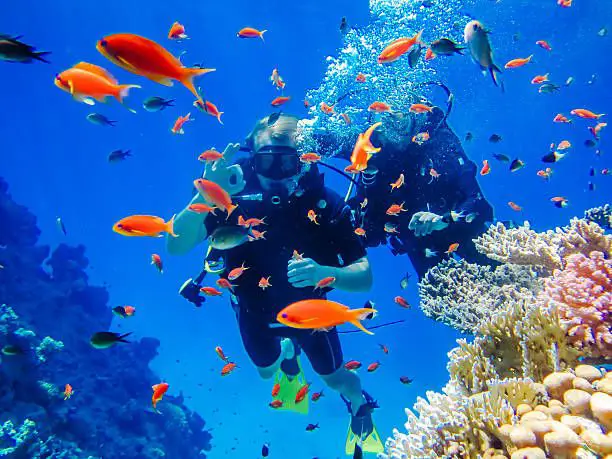
Saba Marine Park is a protected marine reserve located off the coast of the island of Saba in the Caribbean. It covers an area of over 5 square miles and is home to a diverse range of marine life, including coral formations, sponges, and a variety of fish species.
The park is popular among divers and snorkelers, who can explore a range of dive sites with depths ranging from 20 to over 100 feet.
Some of the most popular dive sites in Saba Marine Park include the Pinnacles, a series of underwater volcanic spires covered in coral that rise from depths of over 100 feet to within 40 feet of the surface, and the Tent Reef, a shallow site that is home to a variety of colorful fish and other marine life.
In addition to diving and snorkeling, visitors to Saba Marine Park can also enjoy other outdoor activities like hiking, birdwatching, and exploring the island's unique culture and history.
Saba is known for its quaint villages, picturesque landscapes, and friendly locals, making it a popular destination for tourists looking to get off the beaten path and experience something different.
It's worth noting that Saba Marine Park is a protected area, and visitors are encouraged to practice responsible tourism and follow local guidelines to ensure the preservation of this important ecosystem.
The park has strict rules and regulations in place to protect the marine life and the environment, and visitors are expected to follow them to help preserve this unique and beautiful natural wonder.
Conclusion
The Caribbean is home to some of the most spectacular dive sites in the world, offering divers and snorkelers the opportunity to explore a wide range of marine ecosystems and encounter a diverse array of marine life.
From the steep underwater walls of Bloody Bay in the Cayman Islands, to the stunning coral formations of the Turks and Caicos Barrier Reef, and the abundant marine life of Saba Marine Park, the Caribbean is truly a paradise for underwater enthusiasts.
Many of these dive sites are protected areas, and visitors are encouraged to practice responsible tourism and follow local guidelines to ensure the preservation of these important ecosystems.
By doing so, we can help protect the marine life and natural beauty of the Caribbean for generations to come.
Whether you are a seasoned diver or a beginner snorkeler, there is something for everyone in the Caribbean.
With its crystal-clear waters, vibrant coral reefs, and abundant marine life, it's no wonder that the Caribbean remains a top destination for divers and snorkelers from around the world.
